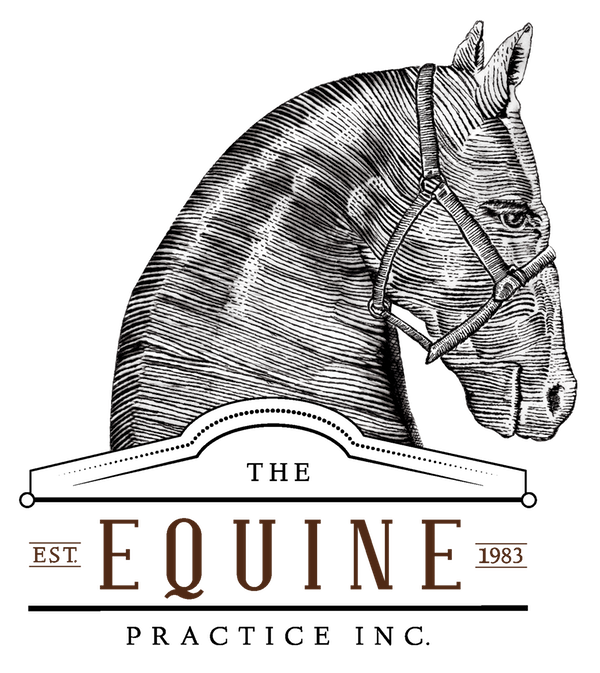(above) A bucket with hay pellets and soy bean meal. This plus grass hay, alfalfa cubes and pasture is all this horse eats.
Keep It Simple Doc
I hear this all the time from horse owners who feel that in making horse nutrition simple, I have missed the mark. “Just tell me what I need to do.”
The reason for explaining what is going on at the molecular and cellular level is that if you are willing to dig in deep you might feed the horse correctly through understanding. I guess I was wrong. It’s not that people are stupid but rather it is because what I am saying is so different. The brain shuts down because I am asking people to change. Who wants to change especially when there doesn’t appear to be anything wrong. Worse, no one is telling you that there might be a connection between what is wrong with your horse (disease, lame) with what and how you are feeding them (nutrition).
Let’s go for what to do and not discuss the why you should. In a simple 3 step process I will explain how to feed MOST horses. There are some exceptions to this protocol and if you have any questions you should always ask your veterinarian. Some of the exceptions include any disease your horse is being treated for or any unsoundness you are working on. Also foals and seniors or extreme weather conditions bring some extra thoughts. With this in mind, here goes.
1) Feed only pasture, hay, water. Real salt is OK. Do not feed anything else (treats, carrots, candy, apples, sugar cubes, minerals, electrolytes, grain, grain by-products, etc) other than pasture, hay, water +/- real salt.
2) Add 1 pound of soybean meal plus about 4 pounds of alfalfa hay for horses weighing between 1000 and 1400 pounds (1200 pounds) after 10 days of no grain. (If you can't get soybean meal try other sources of good quality protein but you will need to calculate how much to feed based on the percent protein and the bioavailability of the protein).
3) Write down in a dedicated journal for each horse in a dated format everything you see in your horse before you start this protocol and for the next 2 weeks. Add daily observations then continue with weekly observations out to about 6 months. Write down body condition, top line condition, hoof and hair coat condition, attitude, behavior, fecal consistency, grooming vices, riding difficulties, training difficulties, workout recovery, ability to sweat, and anything else you want. It is fun NOT to tell anyone such as your vets, riders, trainers, farriers that you are doing this and wait for them to comment on their own. Sometimes they need a leading question from you but often they offer it without any prompting.
Any questions?
I’m done here because that’s all that needs to be done. Understanding the difference between starch and cellulose, understanding the importance of gut microbes or gut inflammation or understanding what minerals and vitamins are isn’t really necessary. Just trust. After all the 2 week no-grain challenge is only 14 days. And it doesn’t cost a penny. Most importantly if it doesn’t work you can always go back to what you were doing - as long as you don’t cheat during the challenge. No treats, supplements, or ANYTHING other than pasture, hay, water and some real salt.
It’s hard to break a habit of feeding a treat to show your love. But if the treat is part of the carbohydrate dependency which leads to mitochondrial exhaustion and protein loss….. oops, sorry. Try feeding 1 or 2 peanuts in the shell or a hay cube instead of the sugar treat.
If this works for you and you want to learn about why it works then you can go to my university course on Horsemanship Nutrition.
This week I received an email announcing a symposium on lameness in horses. The speakers will be discussing diseases of the connective tissue including laminitis and suspensory ligaments along with diagnostics and therapies. But not one word on nutrition and the importance of protein to the musculoskeletal system.
We are what we eat - and so is your horse. Horses were made to graze on what was available where they lived during the time they ate. With grain only available during a limited time of the year how can we think they need grain every day of the year? And by-products are created because they don’t want to feed it to humans. There are no vitamin or mineral deficiencies in horses other than in starvation cases. Feed horses what they created their unique digestive system for - cellulose digestion.
1-2-3
It really is as simple as 1 followed by adding 2 later with 3 being the recording of your observations. Just ask yourself, is what you are doing working? If not, then try something different. Remove things rather than add things. Then be patient as the gut inflammation heals. Then tell others about this. It's as simple as….
The Horsemanship Nutrition Course
If this article makes you want to learn more then click here to find out about this course offered by The Horse's Advocate University.
Discover nutrition for horsesEquine Dentistry Without Drama™
Your horse’s health is important to us at The Equine Practice Inc and so are their teeth so remember to call Melissa and Doc T for a dentistry appointment. 888 HORZVET (467-9838)Back to Travels With Doc T blogs

